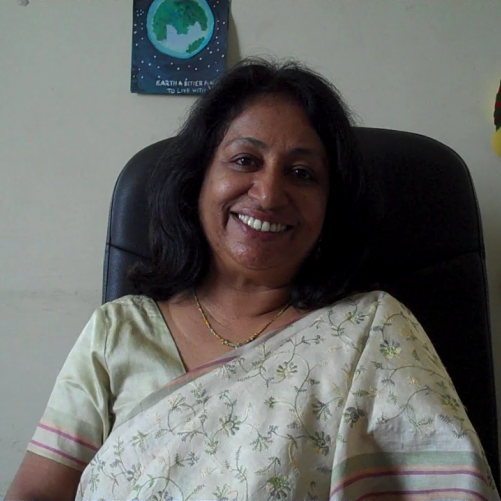
It was quiet day at Vathsalya Charitable Trust, the day we visited. Their CEO Mary Paul was out at a meeting with Government officials and while we waited for her to return, we spent time with the children at their in-house school. There were just 9-10 kids. That isn’t too many children. But for an organization like Vathsalya, it can only be a good thing. Vathsalya’s mission is “to find families for homeless children, as every child deserves a permanent family of his/her own.” So having lesser number of children at their center is testimony that more homes have been found.
Vathsalya believes that the love of a family is necessary for the healthy growth and development of children. Says Mary Paul, “We honestly believe no children should be in an orphanage. Every child – even if the child is an orphan – should be with a family. If not birth family, the next option should be adoption.” Over the years, they have realized that institutions should be the last resort for any homeless child. And this learning has come from the healthy and beautiful transformation they’ve seen in the children they’ve helped. Vathsalya follows a foster care model. They believe that this helps in both the physical as well as emotional development of children. Adds Mary Paul, “We’ve gone a step further to say if not even an adoptive family, children should be placed in at least a foster family till a permanent home for them is found.”
So how does the process work at Vathsalya? Children are placed in foster care till permanent loving homes for them can be found. More than 80% of their children are in foster homes within three kilometers of the center itself. These foster families are paid (minimum Rs. 1,800 per month per child versus Rs. 750 that the Government pays) to take care of Vathsalya’s children – as they believe, this way, they can ensure that the children will be brought up in a well-provided for environment. The process to find a foster family can be quite tedious. Vathsalya does checks to ensure that the family is a caring one. Families need to demonstrate that they like children; moreover, they must have brought up child(ren) of their own – and their own children must now be older than the foster child(ren) they take in (this is an intentional decision taken by Vathsalya to ensures that families are prepared to deal with all aspects of child rearing as they have experience in the same). In addition, the woman of the family must be a stay-at-home mom, the family must have a stable source of income and their own children should be above 7 years of age (to avoid a fight for the parents’ attention). Checks are also done for child abuse and domestic violence through friends, neighbours and other references.

When in foster care, these children attend Vathsalya’s in-house school. They are taught Maths, Science, English and Kannada here. The classroom is a mix of children between the ages of 3 and 10 years; and the level of each child is different. This is manageable as the classroom size is never more than 10 – as new children arrive at Vathsalya, homes are found for those already there. Of course there have been some children, over the years, for whom they have not been able to find homes. “We’ve been careful to choose good homes for the children who’ve not been able to go into adoption. We also have kids with us who will never find homes through adoption because they are very severely affected. These kids will probably not have a very big lifespan because some of them are totally bedridden. But as long as they live, they are loved and taken care of,” says Paul. These kids are kept in group foster care, which is about 14-15 children living together as a family, till they become adults and can move out to home of their own.
So where do the new children come from? Most are brought here from the Child Welfare Committee. These are children who have officially been registered as orphans; usually brought in by a neighbor or relative when the child’s parents passed away and there’s no one else to look after them. There have been a few cases where babies have been left at their doorstep or a concerned citizen has reported a case to them. They’ve also seen a few cases where mothers have been forced to relinquish children as they are not able to take care of the same. Infact, many who come in have some kind of disability – which was probably the reason they were abandoned. Which is why one of Vathsalya’s future plans is to set up a full-fledged facility for special kids. Says Mary Paul, “At no time are we going to be not having kids with special needs. So we need to keep that option open to looking after them even if they don’t go into adoption. Some of them come to us at birth. And we come to know of their disability only three months down the line.”
Till date Vathsalya has never refused a child; and they never plan on doing so either. Homes have been found for over 95% of their children – both in India and abroad. This is clearly an organization truly committed to giving abandoned children better lives.
Established in 2000, Give is the largest and most trusted giving platform in India. Our community of 2.6M+ donors have supported 2,800+ nonprofits, impacting 15M+ lives across India.
Discover more from
Subscribe to get the latest posts sent to your email.
